Difference between revisions of "Command Department"
CrimsonTacit (talk | contribs) |
CrimsonTacit (talk | contribs) m |
||
| Line 29: | Line 29: | ||
[[File:JaniceRand.jpg|thumb|[[ma:Janice Rand|Yeoman Janice Rand]], aboard the ''Enterprise'' in the 2260s.]]A yeoman is an administrative aid to a senior officer, or more generally a gopher and support staff member who helps with minor tasks (such as retrieving objects, sending messages, updating records, etc.). This position can be held by an enlisted member of Starfleet (i.e. a proper yeoman) or by a junior officer, such as an ensign or junior lieutenant wanting to learn more about command. Their usage is up to the officer they serve under, and ranges from all the way from handling clerical tasks to being a confidante and sounding board. The smallest units might not have any yeomen at all, but the largest might have dozens. Yeomen can also be found in other departments, handling similar tasks. Yeomen wear operations gold, rather than command red, to signify their support role. | [[File:JaniceRand.jpg|thumb|[[ma:Janice Rand|Yeoman Janice Rand]], aboard the ''Enterprise'' in the 2260s.]]A yeoman is an administrative aid to a senior officer, or more generally a gopher and support staff member who helps with minor tasks (such as retrieving objects, sending messages, updating records, etc.). This position can be held by an enlisted member of Starfleet (i.e. a proper yeoman) or by a junior officer, such as an ensign or junior lieutenant wanting to learn more about command. Their usage is up to the officer they serve under, and ranges from all the way from handling clerical tasks to being a confidante and sounding board. The smallest units might not have any yeomen at all, but the largest might have dozens. Yeomen can also be found in other departments, handling similar tasks. Yeomen wear operations gold, rather than command red, to signify their support role. | ||
==Additional Command Positions== | ==Additional Command Positions== | ||
Larger units often have additional command department personnel, both holding watches on the bridge and assisting the Commanding Officer and Executive Officer in the performance of their duties. | |||
===Officer of the Watch=== | ===Officer of the Watch=== | ||
It is standard practice to have bridge-qualified department heads take the conn (i.e. command the bridge or operations center) when the captain, first officer, or second officer are otherwise occupied. Some starships have additional command department personnel who routinely stand watch on the bridge; most often this is a dedicated night-shift officer of the watch, but the largest ships might have up to six or seven officers between the rank of lieutenant junior grade and commander who are assigned to specific watches. This is more common aboard stations. | It is standard practice to have bridge-qualified department heads take the conn (i.e. command the bridge or operations center) when the captain, first officer, or second officer are otherwise occupied. Some starships have additional command department personnel who routinely stand watch on the bridge; most often this is a dedicated night-shift officer of the watch, but the largest ships might have up to six or seven officers between the rank of lieutenant junior grade and commander who are assigned to specific watches. This is more common aboard stations. | ||
===Command Master Chief=== | ===Command Master Chief=== | ||
The Command Master Chief is the senior-most enlisted member of a unit, and might have additional responsibilities related to meeting the needs of the unit's enlisted population. This responsibility overlaps with the executive officer's responsibility for crew readiness and the counselor's responsibility to help address crew needs. While not all units have someone in this role, its value is in being able to provide the perspective of someone who's successfully navigated an enlisted career path to help train other enlisted personnel. As suggested by the name, this is generally a master chief petty officer, but lower enlisted grades could hold a modified title (Command Senior Chief, Command Chief, etc.) if necessary. | The Command Master Chief is the senior-most enlisted member of a unit, and might have additional responsibilities related to meeting the needs of the unit's enlisted population. This responsibility overlaps with the executive officer's responsibility for crew readiness and the counselor's responsibility to help address crew needs. While not all units have someone in this role, its value is in being able to provide the perspective of someone who's successfully navigated an enlisted career path to help train other enlisted personnel. As suggested by the name, this is generally a master chief petty officer, but lower enlisted grades could hold a modified title (Command Senior Chief, Command Chief, etc.) if necessary. | ||
=== Administrative Section === | |||
On the very largest units, the Command Department might have an Administrative Section, led by the Administrative Officer, under which personnel such as yeomen, records officer, and personnel officers would fall, as the number of people in these roles would require more oversight than would be feasible for the Executive Officer, who must think of the whole ship. | |||
==== Administrative Officer ==== | |||
A unit with a records officer, personnel officer, and multiple yeomen might have an Administrative Officer, who leads the ship's Administrative Section. This officer would coordinate the duty schedules for this section, taking that burden from the Executive Officer. Such an officer might also serve as a senior advisor to the commanding officer. Typically, only the largest ships would have an officer in this role, but it would be vital for most starbases who might have dozens of yeomen, personnel officers, and records officers to manage. | |||
====Records Officer==== | |||
[[File:BenjaminFinney.jpg|thumb|[[ma:Benjamin Finney|Lieutenant Commander Benjamin Finney]], erstwhile Records Officer aboard the ''Enterprise.'']]A unit's records officer is responsible for the accuracy of all logs, reports, and mission materials, and as such generally must have clearance nearly as high as the commanding officer's. They must ensure that everything that goes into the ship's log matches with other logs, and that the proper personnel and offices receive any reports filed. This was once a position found on all starships, but thanks to advancement in automation it is now often omitted. Due to the sensitivity of the information they deal with, this role is sometimes combined with that of the intelligence officer, should one be present. | |||
==== Personnel Officer ==== | |||
A unit's personnel officer is an assistant to the Executive Officer in their duties of compiling duty rosters, performing crew evaluations, and making sure that crewmembers' dossiers are kept up-to-date. They work alongside the Records Officer. | |||
==The Command Department In-Play== | ==The Command Department In-Play== | ||
Revision as of 20:28, 28 September 2021
The Command Department includes both the senior-most officers of the unit, as well as administrative support personnel. On the largest units (such as starbases) there can be dozens of people in the command department, while on smaller units it may just be the senior officers and a yeoman or two. Smaller units also often combine command-related departments such as Strategic Operations, Intelligence or Diplomacy, if officers in those specialties are present.
Duties
The Command Department has some of the most complex duties of any department in any unit, with wide-ranging responsibility for the safety of their command, being the final word on navigation, engineering readiness, security, crew discipline, and even diplomatic decisions that might have repercussions for the entire Federation. The buck stops with the Command Department and the captain, on every non-medical issue.
- Carry out the orders of Starfleet, and represent the United Federation of Planets.
- Ensure all departments are properly staffed with qualified personnel, and supervise all departments in the performance of their duties.
- Ensure the safe navigation and readiness of their unit.
- Serve as the ultimate disciplinary authority within their unit, up to and including recommending courts-martial when necessary.
Standard Command Positions
Commanding Officer
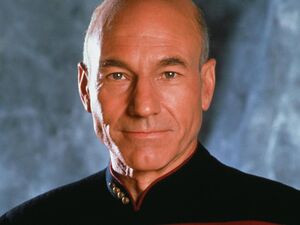
The Commanding Officer is the senior-most officer in charge of a unit. They have ultimate responsibility for the safety of their crew and for carrying out Starfleet's instructions. Aboard a starship, the commanding officer is always addressed as 'captain' even if they have a lower rank, but this custom does not apply to space stations. Starship commanding officers range in rank from lieutenant commander (for the smallest frigates and escorts) to fleet captain (for very senior captains aboard the largest ships), while for stations some of the smallest outposts (such as subspace relay stations) might be commanded by a lieutenant junior grade ranging to a full admiral commanding Starfleet's most important fleet yards.
Starships are rarely commanded directly by flag officers more senior than commodores. For the flagships of more senior officers, it is very common for the ship to have its own captain, who handles the day-to-day running of the ship. Historically, this officer would be called a flag captain, but the use of this term varies based on officers' preferences. Typically, a flag captain is relatively junior in seniority, given that they are closely supervised by their flag officer.
The captain of a starship has significant powers deriving from the difficulty of real-time contact with Starfleet, including the power to negotiate treaties and trade agreements when out of touch with Command. They also have authority over lesser vessels (such as tankers, freighters, passenger ships, etc.) during emergency situations. Similarly, commanding officers of starbases are often the senior-most officer in their sector with corresponding authority over starships in that sector.
Executive Officer / First Officer
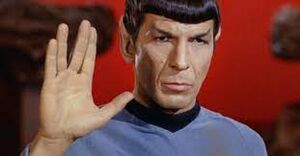
The Executive Officer of a unit is second-in-command, responsible for assisting the commanding officer in carrying out their duties and taking command in their absence. Some of the XO's primary responsibilities are determining the duty schedule, performing crew evaluations, and ensuring that proper training has occurred for everyone aboard the ship. They are the interface between the CO and the crew, often serving as disciplinarian, career counselor, and supervisor to everyone on the ship or station. On a starship, the XO typically leads all away missions. XO's can range in rank from lieutenant to captain depending on the size of the unit. Whether they are called the Executive Officer or First Officer comes down to the CO's preference.
First officers have important responsibilities in several emergency and contingency protocols, including needing to concur with the commanding officer's decision to self-destruct the ship or station in most circumstances, and needing to concur with the opinion of both the ship's counselor and the chief medical officer in circumstances where the commanding officer must be relieved of duty.
On larger commands, this role is most often separate, but on smaller vessels (and historically in Starfleet) it is often a dual-role for one of the department heads. In this case, they wear the color of the department that they also head.
Second Officer
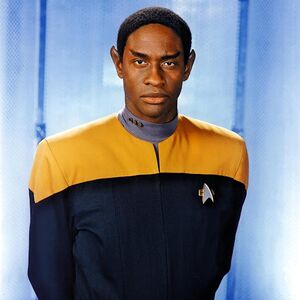
The Second Officer of a unit is third-in-command after the Executive Officer. This role is almost always a secondary duty for a department head, and generally does not carry any administrative burden on its own, but rather is a title for the officer designated to take over, should the CO and XO both be absent. Traditionally, the second officer also accompanies away teams. Second officers wear the color of the department they head. Often, but not always, they are the department head with the highest rank who is also bridge-qualified. For example, a second officer might hold the rank of lieutenant even if a the chief medical officer is a lieutenant commander, if the CMO were not bridge qualified. In the case of Lieutenant Commander Data, he was out-ranked by both Counselor Troi and Doctor Crusher, but was Second Officer because of his experience and capabilities as a bridge officer.
The very largest commands such as major starbases might have a dedicated second officer within the command department, but this is uncommon aboard the average station or starship.
Yeoman
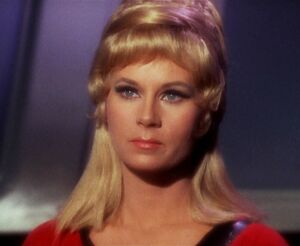
A yeoman is an administrative aid to a senior officer, or more generally a gopher and support staff member who helps with minor tasks (such as retrieving objects, sending messages, updating records, etc.). This position can be held by an enlisted member of Starfleet (i.e. a proper yeoman) or by a junior officer, such as an ensign or junior lieutenant wanting to learn more about command. Their usage is up to the officer they serve under, and ranges from all the way from handling clerical tasks to being a confidante and sounding board. The smallest units might not have any yeomen at all, but the largest might have dozens. Yeomen can also be found in other departments, handling similar tasks. Yeomen wear operations gold, rather than command red, to signify their support role.
Additional Command Positions
Larger units often have additional command department personnel, both holding watches on the bridge and assisting the Commanding Officer and Executive Officer in the performance of their duties.
Officer of the Watch
It is standard practice to have bridge-qualified department heads take the conn (i.e. command the bridge or operations center) when the captain, first officer, or second officer are otherwise occupied. Some starships have additional command department personnel who routinely stand watch on the bridge; most often this is a dedicated night-shift officer of the watch, but the largest ships might have up to six or seven officers between the rank of lieutenant junior grade and commander who are assigned to specific watches. This is more common aboard stations.
Command Master Chief
The Command Master Chief is the senior-most enlisted member of a unit, and might have additional responsibilities related to meeting the needs of the unit's enlisted population. This responsibility overlaps with the executive officer's responsibility for crew readiness and the counselor's responsibility to help address crew needs. While not all units have someone in this role, its value is in being able to provide the perspective of someone who's successfully navigated an enlisted career path to help train other enlisted personnel. As suggested by the name, this is generally a master chief petty officer, but lower enlisted grades could hold a modified title (Command Senior Chief, Command Chief, etc.) if necessary.
Administrative Section
On the very largest units, the Command Department might have an Administrative Section, led by the Administrative Officer, under which personnel such as yeomen, records officer, and personnel officers would fall, as the number of people in these roles would require more oversight than would be feasible for the Executive Officer, who must think of the whole ship.
Administrative Officer
A unit with a records officer, personnel officer, and multiple yeomen might have an Administrative Officer, who leads the ship's Administrative Section. This officer would coordinate the duty schedules for this section, taking that burden from the Executive Officer. Such an officer might also serve as a senior advisor to the commanding officer. Typically, only the largest ships would have an officer in this role, but it would be vital for most starbases who might have dozens of yeomen, personnel officers, and records officers to manage.
Records Officer
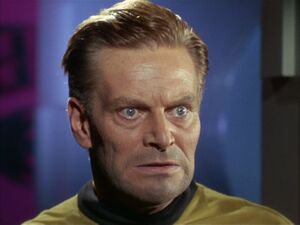
A unit's records officer is responsible for the accuracy of all logs, reports, and mission materials, and as such generally must have clearance nearly as high as the commanding officer's. They must ensure that everything that goes into the ship's log matches with other logs, and that the proper personnel and offices receive any reports filed. This was once a position found on all starships, but thanks to advancement in automation it is now often omitted. Due to the sensitivity of the information they deal with, this role is sometimes combined with that of the intelligence officer, should one be present.
Personnel Officer
A unit's personnel officer is an assistant to the Executive Officer in their duties of compiling duty rosters, performing crew evaluations, and making sure that crewmembers' dossiers are kept up-to-date. They work alongside the Records Officer.
The Command Department In-Play
- This is both the most important and the smallest major department aboard any ship or base.
- Only very large ships or stations would have many people in this department beyond the CO and XO.
- Officers of the Watch have likely been seen on screen (for example the officer in command of the Prometheus on DS9 held the rank of either lieutenant junior grade or lieutenant commander (depending on if we accept the costume or how he was addressed) and may have been an Officer of the Watch rather than the ship's captain) but the idea here is 'extra' command-division junior officers who are specifically there to take over the bridge when necessary, especially on larger ships and starbases.